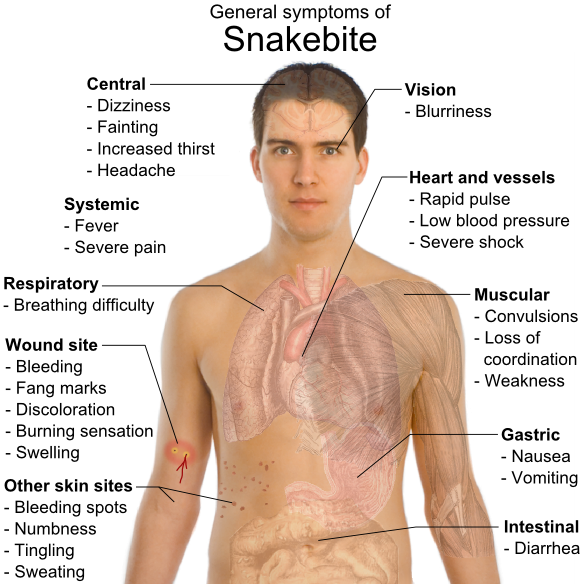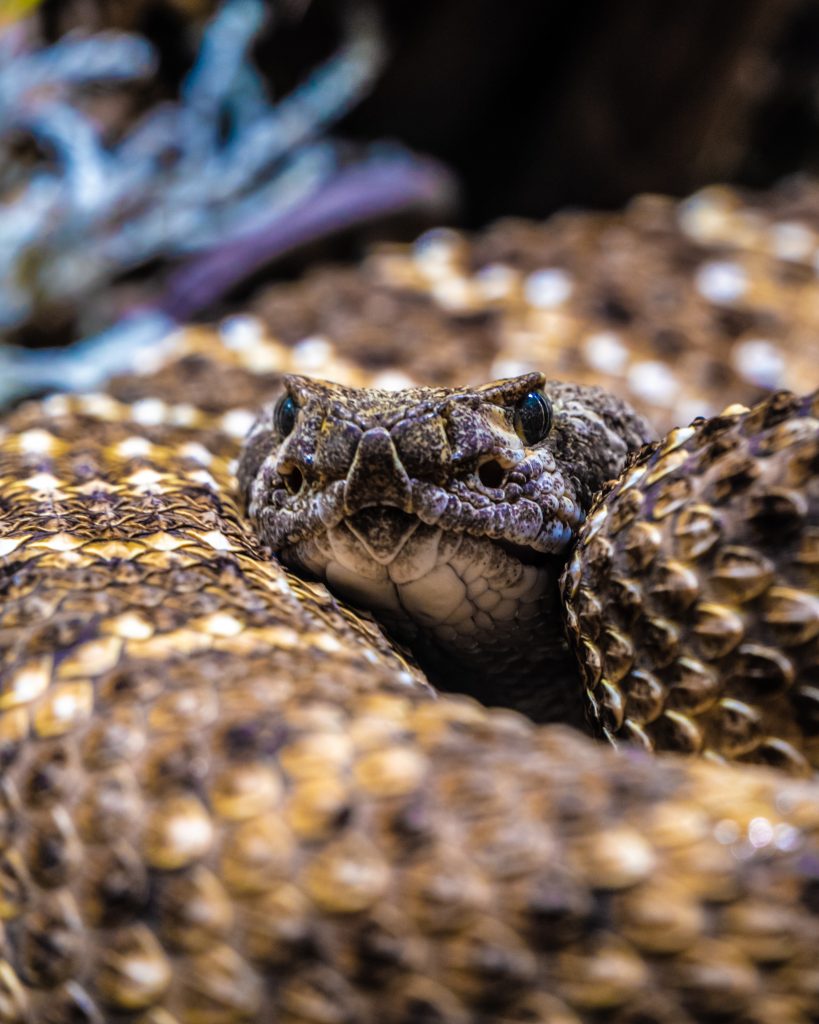Although nearly 8,000 people are bit by venomous snakes each year, there are usually no more than eight deaths. However, this should not lead backpackers and hikers to believe it isn’t something to worry about. Snakes do not want to waste their poison on humans, but rather rodents and other small animals to feed on. If a bite victim is not treated quickly, the venom can be deathly. Even a bite from a so-called “harmless” snake can cause infection or allergic reaction.
Preventing Snake Bites
While in the outdoors, do not pester, bother, or provoke snakes or other animals as you are in their territory. Do not play with them or attempt to pick a snake up unless you are a trained professional. If a snake is to bite a human, it is merely defensive in nature and will likely only leave enough venom behind to cause illness.
Backpacking Tip:
Avoid hiking in areas where snakes are known to be. Stay out of tall grass and on the trail as much as possible. If you must invade snake territory, wear long pants, ankle-high boots, or even snake-proof gaiters. Also, be careful when stepping in areas where snakes could be hiding, such as under rocks or logs. If you are entering an area where you can not see your feet, kick ahead of you to give snakes enough warning and time to slither away. However, always keep your hands and feet out of areas where you are unable to see them. Also, be careful around rocks or while picking up firewood.
Snake Bite Symptoms
- Bloody wound discharge
- Fang marks or swelling at wound
- Extreme localized pain
- Diarrhea
- Burning sensation
- Excessive sweating
- Fever
- Rapid heart rate
- Weakness of body
- Loss of muscle coordination
- Blurred vision
- Dizziness
- Nausea and vomiting
- Numbness or tingling
- Convulsions
- Fainting

All snakes will attack if they feel threatened or surprised, but only a handful are actually venomous. In any case, treat every bite seriously while you are backpacking or hiking. This list includes the:
- Rattlesnake
- Cobra
- Copperhead
- Coral snake
- Cottonmouth Water Moccasin
Snake Bite First Aid Procedure
-
- Keep the snake bit victim calm, keeping them still and quiet. Restrict movement, and keep the affected area at or below heart level to reduce the flow of venom.
- Remove any rings or constricting items and clothing as the affected area may swell.
- Allow the bite to bleed freely for 15 – 30 seconds before cleansing.
- Create a loose splint to help restrict movement of the area.
- Contact medical help as soon as possible (see below).
- Evacuate the victim immediately by hiking to a car, a helicopter, or medical staff.
- Monitor the person’s vital signs — temperature, pulse, rate of breathing, and blood pressure — if possible. Watch for any signs of shock (sweating, clammy skin, or shallow breathing), since the fear of having been bitten is often more dangerous than the bite.
- Attempt to identify the snake or, only if can be done safely, bring in the dead snake. Do not waste time hunting for the snake, and do not risk another bite if it is not easy to kill the snake. After it has been killed, a snake can still bite for up to an hour, so be careful while transporting it.
Seek Medical Attention
Call 911 or your local emergency number immediately if someone has been bitten by a snake. If treated correctly, many bite victims will not have serious injuries. However, medical support needs to know the correct anti-venom to use, as this is the only treatment. Attempt to identify the snake or remember its appearance in order to let the hospital or poison control what type of anti-venom is needed.
You may also call the National Poison Control Center at 1-800-222-1222. The center can be called from anywhere in the United States. This national hotline number will let you talk to experts in any kind of poisoning. You may call them with any questions regarding prevention or treatment. This national number is connected to all the local poison control centers. It does NOT need to be an emergency to call the National Poison Control Center – you may call them for any reason 24 hours a day, 7 days a week.
The Six Don’ts
-
-
- Don’t let the allow the victim to engage in strenuous physical activity. If necessary, carry the person to safety. Otherwise, have them hike out slowly without their pack so they are not over-exerted.
- Don’t apply a tourniquet. Restricting superficial blood flow does keep the venom from spreading, which you want to avoid. Concentrated venom will rapidly destroy cells. Allowing it to spread will dilute the toxin and reduce tissue damage.
- Don’t apply a cold pack. Cold reduces healthy circulation to the infected area. Also, some experts believe snake venom increases vulnerability to frostbite.
- Don’t apply a suction device. Removing the venom by suction was once standard procedure, but is no longer considered safe treatment. These devices generally to not remove a substantial amount of toxin and can damage sensitive tissue.
- Don’t let the snake bite victim eat or drink anything, including medication and alcohol, unless okayed by medical staff.
- Don’t cut across the bite marks and attempt oral suction. Because snake fangs are curved, the pocket of venom will not be where expected and will probably have already spread. Plus, many snake bites are considered “dry,” where there was no toxin released into the victim. This may also increase the risk of infection in the area by having an open wound.
-
Additional Resources
-
- MedlinePlus – How to Treat Snake Bites
- University of Maryland Medical Center – Snake Bite First Aid
- New York Search and Rescue – Snakebite Emergency First Aid Information
- Backpacker Magazine – Wilderness Snake Bite First Aid
[source]

